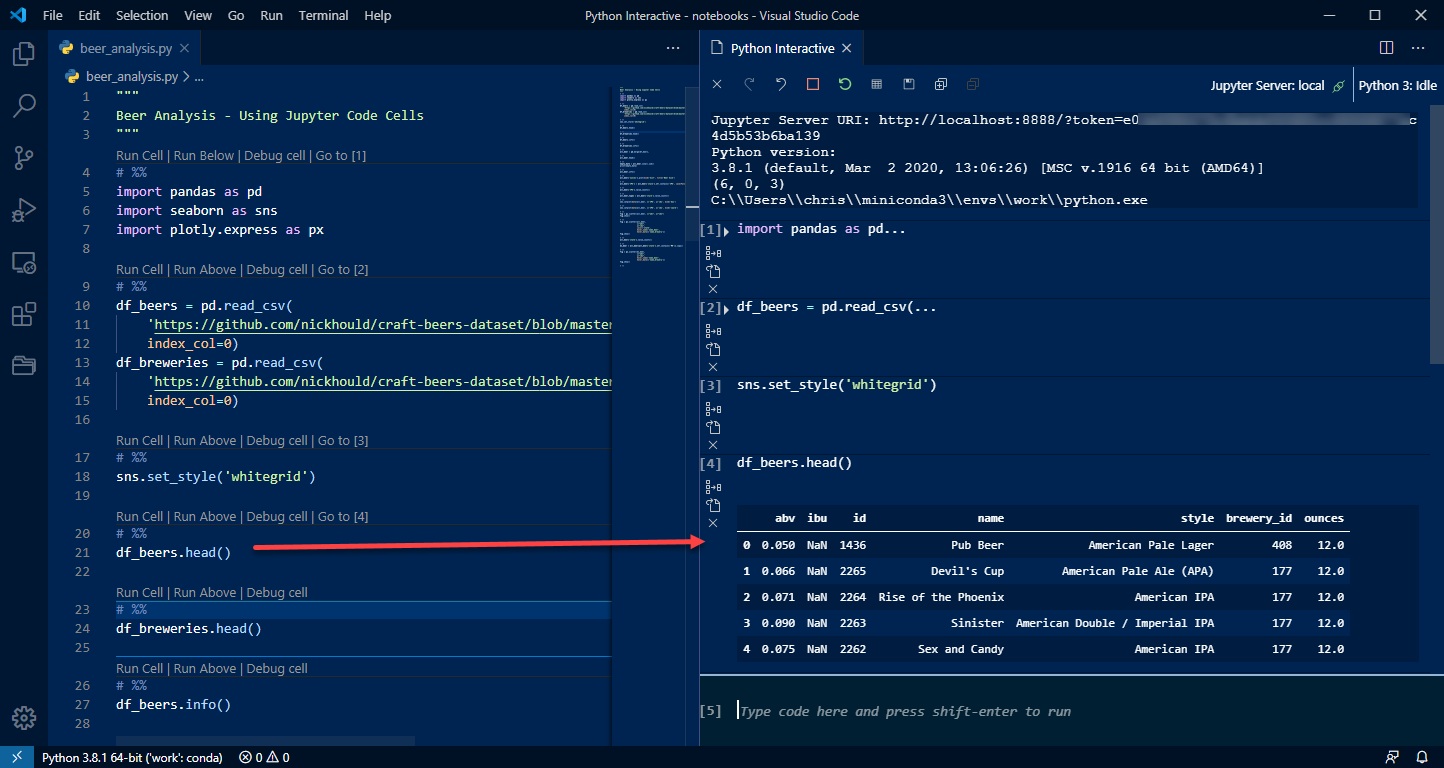

- Install jupyter notebook pycharm how to#
- Install jupyter notebook pycharm install#
- Install jupyter notebook pycharm code#
Take advantage of language-aware code completion, error detection, and on-the-fly code fixes! P圜harm’s smart code editor provides first-class support for Python, jаvascript, CoffeeScript, TypeScript, CSS, popular template languages and more. P圜harm provides smart code completion, code inspections, on-the-fly error highlighting and quick-fixes, along with automated code refactorings and rich navigation capabilities. Note this requires creation or existence of a pycharm project, AND a virtual environment! So already it's way more complicated than just using Jupyter notebook web browser.P圜harm - это интеллектуальная Python IDE с полным набором средств для эффективной разработки на языке Python.

ipynb file into the Pycharm project folder, and then Pycharm will see the file and you open it from there.
Install jupyter notebook pycharm how to#

Install jupyter notebook pycharm install#
Then use conda to install jupyter: conda install jupyter.If you created the environment without installing jupyter (like if you said "conda create -name test python" instead), do the following: in Terminal (bash!!), switch to the new environment using conda: source activate test This creates an environment called "test" with the package "jupyter" loaded (you have to provide something, so "jupyter" in this case is a good basic default package to provide).create a virtual environment using conda: conda create -name test jupyter.You just navigate in Terminal to the folder where your python notebook is or where you want to create a new one, and start a server using 'jupyter notebook' and go from there.īut because I spent time on it, here is how to get Pycharm working with jupyter notebooks: Some VIM shortcuts are used for navigation, the color scheme is better, and it's just less clunky to deal with than pycharm. Alright, the notes are as follows, but at the end of the day I think the regular jupyter notebook server in a web browser is the best option.


 0 kommentar(er)
0 kommentar(er)
